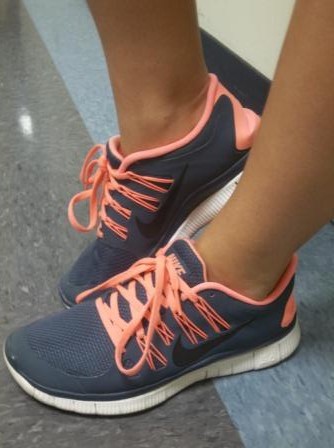
After the Nike Free Run 2.0 sneakers became so popular, Nike engineered the Free Run 3.0, 4.0, and 5.0, each improving on the sneaker’s technology to be the perfect fit for the active runner. Released in the summer of 2012, the main goal of the Free Run 3.0 was for the Nike to have a shoe “for [their] most minimal barefoot-like feel.” At the release of these new sneakers, the going rate was around $100, as they have been for the 4.0 and 5.0. The 3.0 shoes can now be purchased for around $50. Although widely purchased and very popular, the 3.0 brought up some controversial points.
Some people hated the 3.0 and felt that the shoe did not give enough support to do anything outside of the gym. Junior Dorothy Toth said, “I like them, but I got knee pain and ankle pain from them. I couldn’t run for two weeks because of the pain and it took weeks for the swelling to go down. Other than that though, I actually prefer them to my other Nike shoes.”
Nike certainly responded to the feedback and as a result, innovated the 4.0 and 5.0 to have more support in order to yield to the desires of those who had an issue with the Free Run 3.0. The 4.0’s “more cushioned and barefoot-like feel” gives purchasers a better balance between support and a lightweight feeling shoe.
Despite this new model of Free Run, Nike came out with the 5.0, which featured new “Flywire technology, (minimizes weight of shoe while simultaneously creates more support)” a more “dynamic fit” and the largest enhancement, a “flex groove design” for further range of motion. Junior Kayla Gioelli, who owns the Free Run 5.0 said, that they give “lots of support” and “[she] love[s] them.” No matter which option a you choose, be careful to evaluate what exactly you will use the shoe for, in order to receive the maximum benefits from any particular design of the Free Run. Nike is a reliable company that consistently constructs well made products that will last. Happy fitness shopping everyone!


